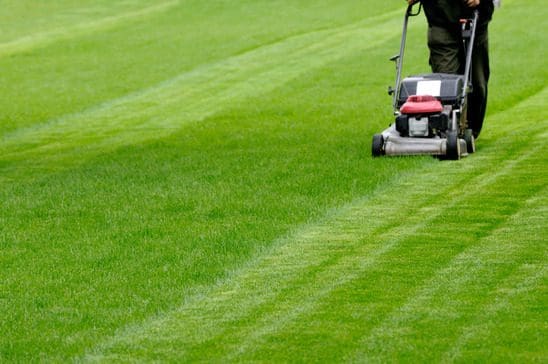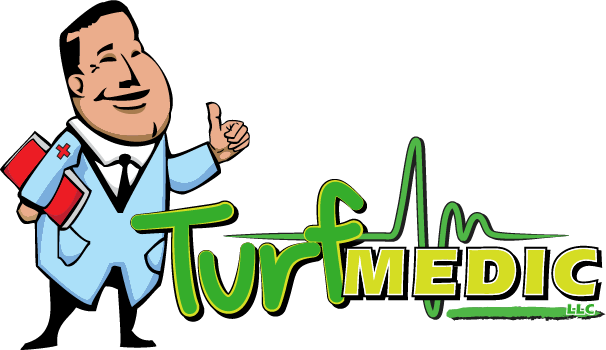We’ve all been there – you’re driving through your Greencastle neighborhood, and you can’t help but notice how some lawns look like they belong on a golf course while others struggle with brown patches, weeds, and thin grass. If you’re tired of watching your neighbors enjoy thick, green lawns while yours disappoints year after year, you’re not alone. Many homeowners in our Pennsylvania region face the same frustrating cycle of trying different products and methods, only to see minimal results or even damage to their grass.
The truth is, most homeowners approach lawn improvement with good intentions but incomplete knowledge. They’ll spend weekend after weekend applying store-bought fertilizers, spraying random weed killers, and following generic advice that doesn’t account for our specific climate and soil conditions here in Greencastle. This trial-and-error approach not only wastes valuable time and money but often leaves lawns in worse condition than when they started.
In this guide, we’ll walk you through the proven methods that consistently transform struggling lawns into the neighborhood showstoppers you’ve always wanted, without the guesswork and frustration of going it alone.
Why Most DIY Lawn Improvement Methods Fall Short
The biggest mistake we see Greencastle homeowners make is treating their lawn problems as isolated issues rather than symptoms of underlying imbalances. When brown patches appear, they grab the first fertilizer they see at the hardware store. When weeds pop up, they spray whatever weed killer promises quick results. This reactive approach might provide temporary relief, but it never addresses the root causes that allowed these problems to develop in the first place.
Common DIY mistakes we encounter include:
- Applying fertilizer at the wrong time of year
- Using generic treatments not suited for Pennsylvania soil
- Over-watering or under-watering without understanding grass needs
- Treating symptoms instead of root causes
- Mixing incompatible products that can damage grass
Timing is another critical factor that most DIY efforts get wrong. Pennsylvania’s climate presents unique challenges with our cold winters, wet springs, and sometimes drought-stressed summers. Applying the wrong treatment at the wrong time can actually stress your grass and make it more vulnerable to the very problems you’re trying to solve. We’ve seen countless lawns damaged by well-meaning homeowners who fertilized too early in spring or applied pre-emergent treatments after weeds had already sprouted.
Store-bought products also come with significant limitations that many homeowners don’t realize until it’s too late. These products are formulated for broad, generic use across different regions and grass types, which means they’re rarely optimized for our specific Pennsylvania soil conditions and local grass varieties. The concentration levels are typically much lower than professional-grade treatments, requiring multiple applications to achieve results that professional products can deliver in a single treatment.
The 5 Essential Elements of Successful Lawn Improvement
Creating a truly healthy lawn requires addressing five interconnected elements that work together to support optimal grass growth:
- Proper soil analysis and pH balance – The foundation for nutrient absorption
- Strategic fertilization timing – Right nutrients at the right time
- Effective weed prevention and control – Stopping problems before they start
- Pest management and disease prevention – Protecting grass from damage
- Seasonal maintenance scheduling – Year-round care coordination
The first element, proper soil analysis and pH balance, forms the foundation for everything else. Most Greencastle soils tend to be slightly acidic, which can prevent grass from absorbing nutrients effectively even when fertilizer is applied regularly. Without correcting pH imbalances first, you’re essentially pouring money into the ground with minimal results.
Strategic fertilization timing is the second essential element, and it’s where we see the most dramatic differences between DIY attempts and professional results. Pennsylvania grass needs different nutrients at different times of the year, and the timing windows can be surprisingly narrow. For example, applying nitrogen too late in fall can prevent grass from properly hardening off for winter, leading to increased disease susceptibility and winter damage.
The remaining three elements – effective weed prevention and control, pest management and disease prevention, and seasonal maintenance scheduling – all require specialized knowledge of local conditions and professional-grade products to execute effectively. These elements must be coordinated carefully because treating one problem can sometimes create vulnerabilities in other areas if not done properly.

Professional-Grade Treatments: What Makes the Difference
The most significant advantage professional lawn care provides is access to products and equipment that simply aren’t available to homeowners. Professional-grade benefits include:
- Commercial-grade fertilizers with controlled-release formulations
- More concentrated and targeted herbicides and fungicides
- Professional spreaders and sprayers for even coverage
- Accurate soil testing equipment for precise treatment decisions
- Customized treatment plans based on specific property conditions
We use commercial-grade fertilizers with controlled-release formulations that provide consistent nutrition over extended periods, eliminating the feast-or-famine cycle that occurs with typical homeowner applications. Our herbicides and fungicides are more concentrated and targeted, allowing us to control specific problems without affecting beneficial organisms in the soil.
Equipment makes a huge difference in treatment effectiveness as well. Professional spreaders and sprayers ensure even coverage and proper application rates, while our soil testing equipment provides accurate readings that guide treatment decisions. We’ve seen many lawns where uneven fertilizer application created a patchwork effect – some areas over-fertilized and burned, others under-fertilized and struggling.
Perhaps most importantly, we customize every treatment plan based on your specific property conditions, grass type, and problem history. What works perfectly for a sunny slope might be completely wrong for a shaded area under mature trees. We account for factors like soil drainage, sun exposure, foot traffic patterns, and even nearby construction or landscape changes that can affect growing conditions.
The Best Way to Improve Your Lawn: Step-by-Step Action Plan
Spring foundation setting from March through May focuses on preparing your lawn for the growing season ahead. This critical period involves soil testing, pH adjustment if needed, and early fertilization with slow-release formulations. We also apply pre-emergent herbicides during this window to prevent summer weeds before they can establish. The key is working with soil conditions – applying treatments when the ground has thawed but before it becomes too wet to support equipment.
Summer maintenance and protection from June through August shifts focus to keeping grass healthy during stress periods. This involves adjusted watering schedules, targeted pest control, and lighter fertilization that supports growth without encouraging excessive top growth that weakens root systems. Disease prevention becomes critical during humid periods, and we monitor for signs of fungal problems that can devastate lawns quickly in our Pennsylvania climate.
Fall strengthening and preparation from September through November is when we see the most dramatic improvements in lawn quality. This is the optimal time for overseeding, heavy fertilization, and major weed control efforts. Pennsylvania grass grows most vigorously during fall’s cooler temperatures and consistent moisture, making it the perfect time for renovation work and establishing new grass that will be ready for next year’s growing season.
When to Choose Professional Lawn Care Services
The decision to hire professional lawn care often comes down to time and results. We work with many busy families who simply don’t have the hours needed to properly maintain their lawns, especially during peak growing seasons when treatments need to be applied on strict schedules. Professional service eliminates the weekend work and constant decision-making about what products to buy and when to apply them.
From a financial perspective, professional lawn care often costs less than the DIY approach when you factor in all the hidden expenses. Homeowners typically spend hundreds of dollars each year on various products, many of which end up being ineffective or even counterproductive. When you add in the cost of equipment, soil tests, and the inevitable do-overs when treatments don’t work as expected, professional service becomes surprisingly cost-effective.
The clearest sign that your lawn needs professional intervention is when problems persist despite your best efforts. If you’ve been fighting the same weeds year after year, dealing with recurring brown patches, or watching your grass thin out despite regular fertilization, it’s time to consider a different approach. These persistent problems usually indicate underlying issues that require professional diagnosis and treatment.
Measuring Your Lawn Improvement Success
Visual indicators of a healthy, improved lawn are usually obvious within a few weeks of proper treatment. Signs of successful lawn improvement include:
- Thicker, more uniform grass coverage
- Consistent green coloring across the entire lawn
- Fewer bare patches and weed intrusions
- Grass that feels resilient underfoot
- Quick recovery from foot traffic and stress
- Maintained color even during dry periods
Timeline expectations vary depending on your lawn’s starting condition and the time of year when improvements begin. Minor improvements like color enhancement can show up within 2-3 weeks of proper fertilization, while major renovations involving overseeding or extensive weed control may take a full growing season to reach their potential. The most dramatic transformations typically occur when treatment programs start in fall and continue through the following growing season.
Maintaining results year-round requires consistent attention to the five essential elements we discussed earlier. Even the most successful lawn improvement program will gradually decline without ongoing maintenance. The good news is that once your lawn reaches optimal health, maintaining that condition requires less intensive treatment than the initial improvement phase. Healthy grass naturally crowds out weeds and resists disease, creating a positive cycle that becomes easier to maintain over time.
Conclusion
The best way to improve your lawn comes down to understanding that successful lawn care is a science, not guesswork. It requires the right products applied at the right times in the right amounts, customized for your specific Greencastle property conditions. While the DIY approach might seem cost-effective initially, most homeowners find that professional lawn care delivers better results in less time while actually saving money in the long run. As a top lawn care service in the Greencastle area, we’ve seen firsthand how the right approach can transform even the most challenging lawns into neighborhood showcases.
If you’re ready to stop fighting the same lawn problems year after year and want to enjoy the thick, green grass that makes your neighbors envious, it’s time to consider a professional approach. We’ve helped hundreds of Greencastle homeowners transform their struggling lawns into the beautiful outdoor spaces they’ve always wanted, and we’d love to show you what’s possible for your property. The best way to improve your lawn starts with a proper assessment of current conditions and a customized treatment plan designed specifically for Pennsylvania’s unique growing conditions.

Recent Comments